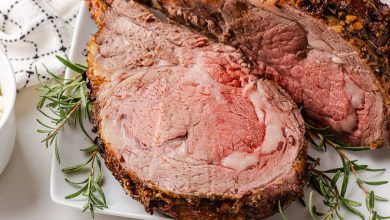Arrowroot Flour: A Versatile Ingredient
Arrowroot flour, derived from the root of the arrowroot plant, is a gluten-free starch that serves as a wonderful alternative to traditional wheat flour in cooking and baking. With its fine, powdery texture, arrowroot flour is often used as a thickening agent for soups, sauces, and gravies. It’s an excellent choice for those on gluten-free, grain-free, or paleo diets, as it adds structure and moisture to recipes without altering the flavor.
Nutritional Information
| Nutrient | Amount per 100g |
|---|---|
| Energy | 357.0 kcal |
| Protein | 0.3 g |
| Fat | 0.1 g |
| Saturated Fat | 0.019 g |
| Carbohydrate | 88.15 g |
| Fiber | 3.4 g |
| Sugar | 0.0 g |
| Calcium | 40.0 mg |
| Iron | 0.33 mg |
| Magnesium | 3.0 mg |
| Phosphorus | 5.0 mg |
| Potassium | 11.0 mg |
| Sodium | 2.0 mg |
| Zinc | 0.07 mg |
| Copper | 0.04 mcg |
| Manganese | 0.47 mg |
| Selenium | 0.0 mcg |
| Vitamin C | 0.0 mg |
| Thiamin (Vitamin B1) | 0.001 mg |
| Riboflavin (Vitamin B2) | 0.0 mg |
| Niacin (Vitamin B3) | 0.0 mg |
| Vitamin B6 | 0.005 mg |
| Folate | 7.0 mcg |
| Vitamin B12 | 0.0 mcg |
| Vitamin A | 0.0 mcg |
| Vitamin E | 0.0 mg |
| Vitamin D2 | 0.0 mcg |
Allergen Information
Arrowroot flour is naturally gluten-free, making it a safe option for individuals with gluten sensitivity or celiac disease. It is also free from common allergens such as dairy, nuts, soy, and eggs. However, as with any ingredient, it is always advisable to check for cross-contamination, especially if you have severe allergies.
Dietary Preferences
- Gluten-Free: Suitable for gluten-free diets.
- Vegan-Friendly: Contains no animal products.
- Paleo: A great addition to paleo recipes due to its natural, unprocessed nature.
- Low in Fat: Ideal for low-fat diets.
Culinary Uses and Tips
Arrowroot flour is an excellent thickener for a variety of dishes. It can be used in baking to add moisture and improve the texture of gluten-free recipes. For thickening purposes, simply mix arrowroot with cold liquid before adding it to hot liquids to prevent clumping.
It’s perfect for creating smooth sauces, gravies, or soups and works well in puddings, fruit pie fillings, and custards. When using arrowroot flour as a thickener, it’s often better to cook at lower temperatures, as it can break down and lose its thickening power when exposed to prolonged heat.
If you’re using arrowroot flour in place of cornstarch, remember to use less, as arrowroot is a more powerful thickener. Arrowroot also tends to result in a clearer finish compared to cornstarch, making it ideal for delicate sauces and glazes.
Conclusion
Arrowroot flour is an incredibly versatile and nutritious ingredient that offers a smooth, fine texture with minimal taste. It’s a fantastic gluten-free option for cooking and baking, providing essential minerals like calcium, iron, and magnesium. Whether you’re using it to thicken soups, create delicate desserts, or improve the moisture in your baking, arrowroot flour is a great addition to any kitchen, especially for those seeking healthier, allergen-friendly alternatives.










